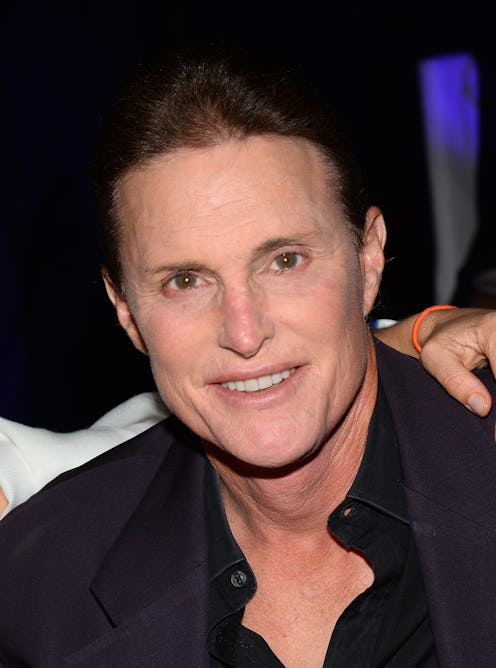News
Can Transgender Athletes Compete In The Olympics?
In the exclusive interview that broadcasted Bruce Jenner's reveal that he identifies as a woman, Diane Sawyer emphasized the "confusion" she and others felt about the complications of gender and sexuality. Many are wondering what Jenner's transgender status means for him as an Olympian. Jenner won the gold medal for the decathlon (an athletics event contested only by men) at the 1976 Summer Olympics in Montreal, setting a world record and retiring immediately afterward. So, what are the Olympics' rules in regard to transgender athletes?
Sadly, the transgender community have only been allowed to participate in the Olympics only since 2004, and only according to a strict set of rules. The International Olympic Committee requires that competitors have completed sex reassignment surgery, been legally recognized as their preferred gender, and undergone hormone therapy for at least two years to "minimize any gender-related advantages." The requirements include completed genital reconstruction surgery, which can be a costly process.
In a statement to Bustle, the IOC said:
The IOC guidelines on hyperandrogenism have been designed as a guide for National Olympic Committees (NOC) and International Federations (IF), which have been asked to adopt them and adapt them to their own organisations/sports. Should a case occur during the Olympic Games, it will be the IOC Medical Commission that will conduct an investigation into any particular case based on the latest state-of-the-art procedures with relevant experts and in close cooperation with the NOC and IF concerned. The guidelines have evolved over time. They are systematically reviewed and amended if necessary to ensure that they take into account any new developments and research in that area.
In 1966, the International Association of Athletics Federation began requiring gender tests for all female athletes after suspicions that Communist countries were disguising male athletes as females for the Olympic games. All female athletes' bodies were examined in the nude with the help of a gynecologist. They were only allowed to participate after being given — no joke — a Certificate of Femininity.
The IAAF stopped this practice in 1968, and the IOC replaced it with a cheek swab test to detect the inactive X chromosome usually found in women. But about 1 in 1,000 people have some form of intersex condition, meaning this test isn't quite accurate. The IOC later switched to DNA tests, but eventually stopped mandatory gender testing in 1999. But they reserved the right to test any female athlete who seemed "suspicious."
In 2006, the IOC changed their gender detection policy to reflect hormone levels in the body — namely, androgen, which is generally a male hormone. That year, Santhi Soundarajan, a female runner, won the silver medal at the Asian Games, but she was stripped of her medal when a test by the Indian Olympic Association revealed that she had androgen insensitivity syndrome, a condition in which a person born with male hormones is insensitive to those hormones, causing them to appear female. Soundarajan's career was "ruined," and she was socially ostracized. But Soundarajan defended herself:
A gender test cannot take away from you who you are.
Only three years later, South African track star Caster Semenya was forced to take a gender test after she won a silver medal in the women's 800-meter run in the 2009 World Championships. After 11 months on the sidelines, Semenya was eventually allowed to return to the track after being cleared as a woman, and she placed second in the women's 800 meters at the 2012 Olympic Games.
So what does it mean that Jenner claims he identified as a woman at the time of the 1976 Olympics? Looking at a photo of himself at the time, he told Diane Sawyer:
That is me. That is her.
Though Jenner had not undergone any physical transition in 1976, he identified as female. According to the report from the committee that met in Stockholm, Sweden in 2003 to discuss transgender policies — now known as the Stockholm consensus — every transgender athlete will have an individual investigation:
It is understood that a confidential case-by-case evaluation will occur.
In the event that the gender of a competing athlete is questioned, the medical delegate (or equivalent) of the relevant sporting body shall have the authority to take all appropriate measures for the determination of the gender of a competitor.
Editor’s Note: Per Jenner’s stated preference, Bustle will continue referring to Jenner using he/his pronouns for the time being. We will follow his lead and make any changes to this policy as needed in the future.
Images: Getty Images
